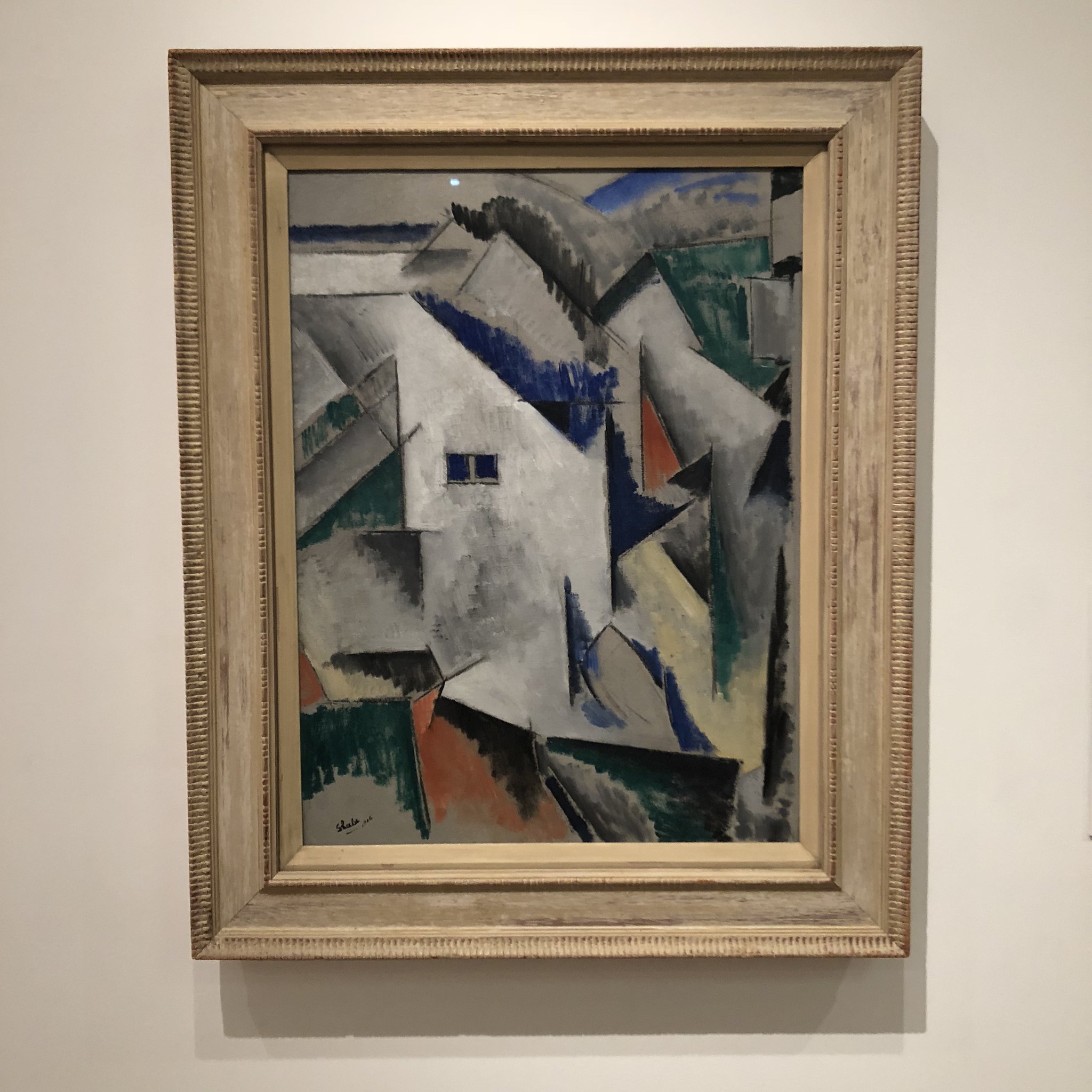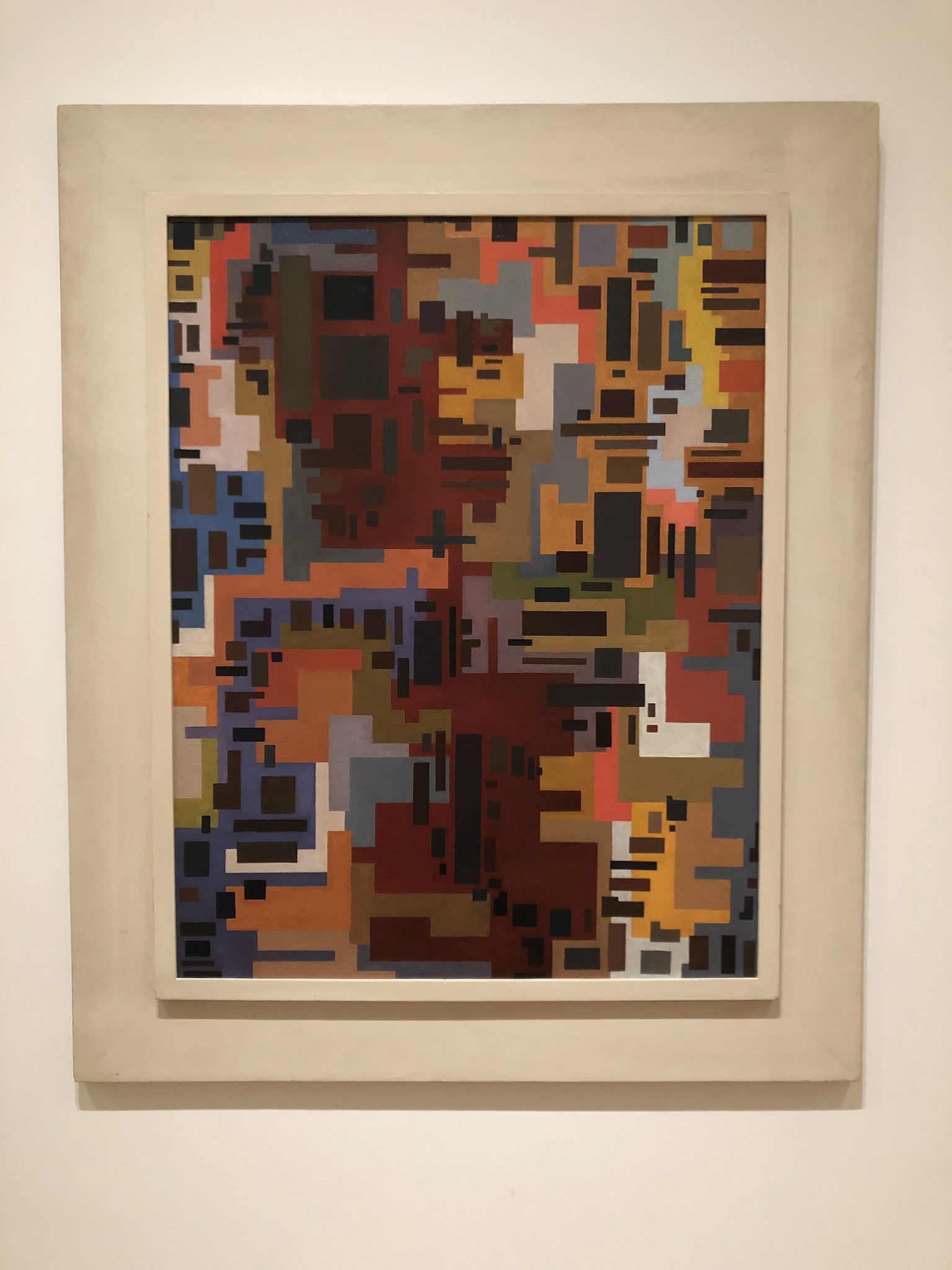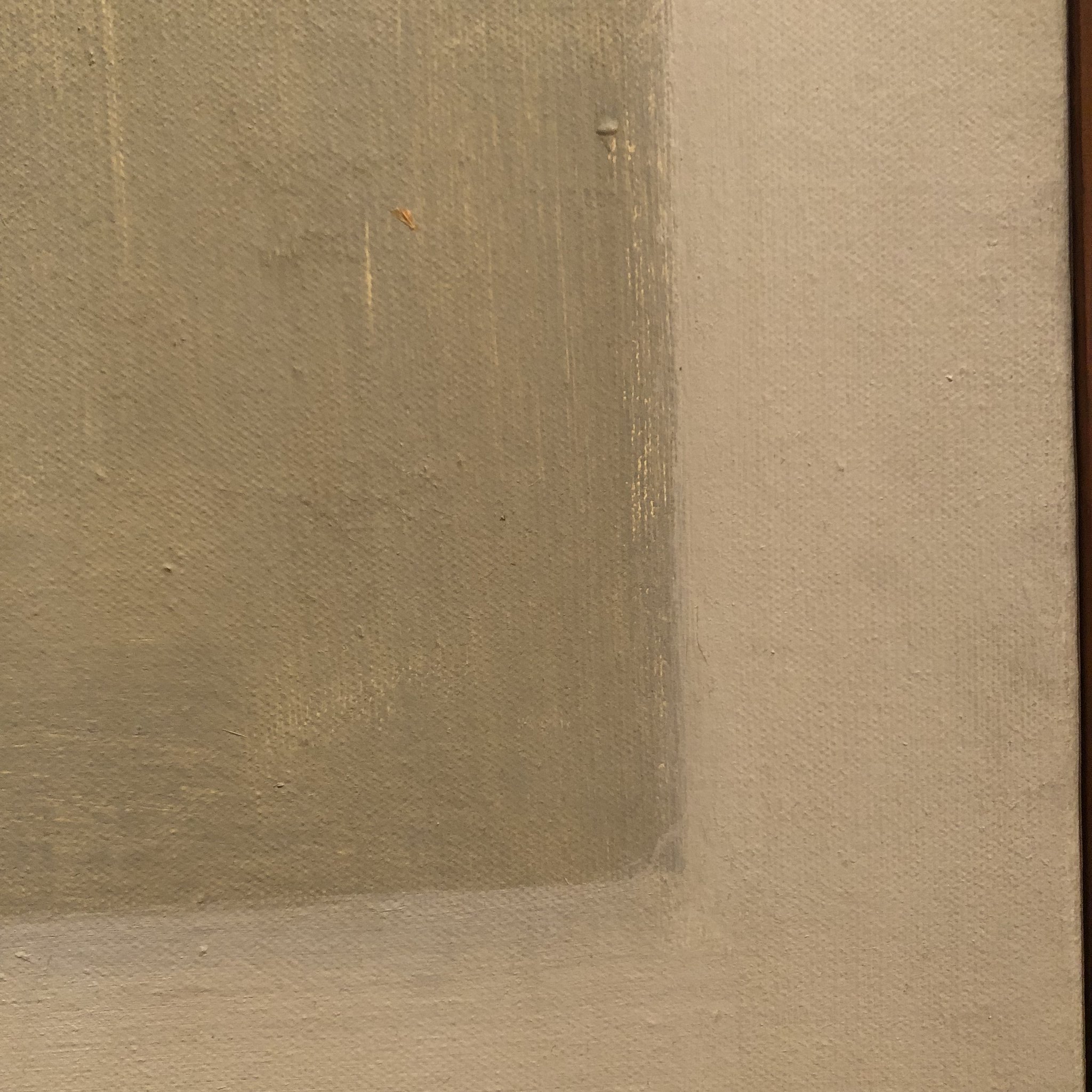An Afternoon With My Flat Friends
I visited the RISD Museum in Providence, RI, today, to spend some time taking my customary Long Look at a number of works. I had a delightful afternoon with my “flat friends,” new and old.

American
Charles Sheeler
1916
Oil on canvas
I would not have been surprised to see “1948” on the gallery tag of this Charles Sheeler painting – but this 1916 work, “American,” is a painting of an American future of quickly constructed angles.
Sitting with this painting made me wonder, did Sheeler complete the final color layer in a single sitting? It has the joyful obsessiveness of a kid with a new flat of markers. How he gets this effect with brushes is an interesting question – the strokes look a lot like hard pressure, up and down, gleefully scrubbing back and forth but never quite covering any surface he’s presented with the black outlines of forms.
All of this sounds like the kind of shallow slam that some will level against an artwork: “My kid could do that.” And it’s true, I’m not sensing a lot of rigor from this particular work. At a quick glance, it seems unfinished, but…maybe that’s the point. One floor down, the museum was hosting a massive exhibition of works from the Gorham Silver company. No one could say that any of it was anything less than exquisitely, and totally, finished. Isn’t that what art is “supposed to be”? a way to show us what something looks like when it’s perfect…when it’s done?
Maybe. But what Sheeler seems to be showing us here is the first draft, the idea, before it all gets worked out and finished; an inspiration, not a product. I think there’s some value to preserving those first delicate sparks, not just the masterful finished works.
And nearly in the center of the painting, a bifurcated window, something we as humans can barely see as anything other than a set of eyes: this is a painting that looks back at us, waiting for us to figure it out, to work it out, to keep at it until we’re done, when things may look very, very different.

L’Hasard (Chance)
Alice Trumbull Mason
1948
Oil on masonite
This painting could little be more different than “American.” How thoroughly thought out, well executed, and finished it is. Like Sheeler’s painting, though, it is also forward-looking, almost digital in effect, though Trumbull Mason’s work was well before the adaptation of computers to use in art in the way we think of such crossovers today.
As I give a painting a long look, I try to get past what I think about a feeling and as quickly as possible into what I feel about it. It’s rarely a quick process, which is why I always ask for the small folding portable stools many museums offer. It’s a long trip from the head to the heart.
It’s going to be all right, this painting murmurs. But why?
Abstract works demand more of us than any “picture of a thing,” whether that thing is a battle, a flower, or a royal family. I find it helps to think of abstract paintings as landscape paintings: just of inner landscapes. Abstract paintings communicate emotion to us in the way that a symphony does – a symphony without words, and an abstract painting without the instant communication of familiar visual forms.
There are so many interconnections in this painting; it makes me imagine the overlap of individuals, families, and institutions from the humble coffee shop to the big civic institutions that outlive all of us. And down the center of the painting is the river of burnt umber, the only color that touches more than one edge of the canvas, the great stream of a community.
When looking at an artwork, I always love best the works that I believe would reward repeated viewings, and this is clearly one of those, both for its dense, rich color, and its precise, technical execution.
Old Friends
I saw two works from artists I’m familiar with. This detail, from a painting called Magic Lantern, is from an artist virtually everyone is familiar with: it’s one of Jackson Pollock’s earliest “poured paintings.” Yes, that’s a carpet tack in the middle. I couldn’t stop looking for one once I saw it listed in the gallery tag as one of the materials used in this work.

Unlike his later poured paintings, this one is quite small; perhaps four feet by two feet, taller than it is wide. It’s also not exactly placed in a position of honor, despite being a work from a groundbreaking painter and a gift from famed collector Peggy Guggenheim. It’s interesting to watch people watching a Pollock. One laughed. Another wondered why such a work would be in a museum. He’s famous, but also a bit of a punchline.
Lastly, my dear Agnes Martin was there, with a painting bringing me full circle from Sheeler’s “American” with a painting called “America.” Painted in 1958 and 1959, this is very different from the monumental works of Martin’s that I write about here. Perhaps 2X3, two modest rectangles in different shades of olive and tan sit side by side.

Were these meant to represent the two different years (1958 and 59?) Do the dimensions of the painting – not square – indicate that this work predates Martin’s incorporation of massive grids into her work?
When I look at Martin’s work, I often think of Heather’s work – a close look always makes me think, “Her hand touched every millimeter of this surface.” Two rectangles – they could be the product of Photoshop, or an industrial process. But they are, upon closer inspection, incontrovertibly the product of an artist’s hand.

I had a delightful afternoon with my flat friends.